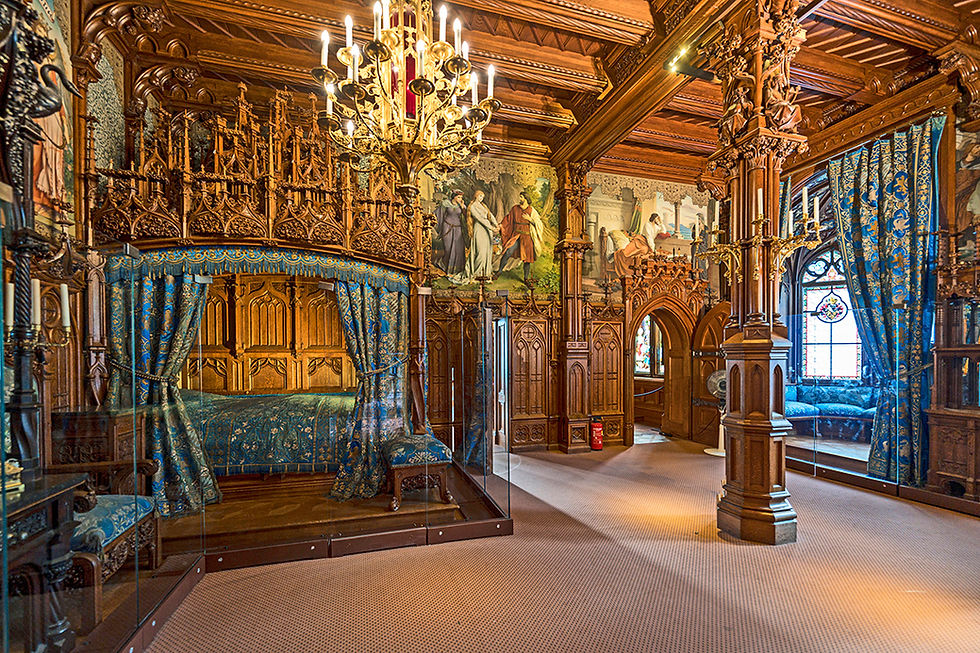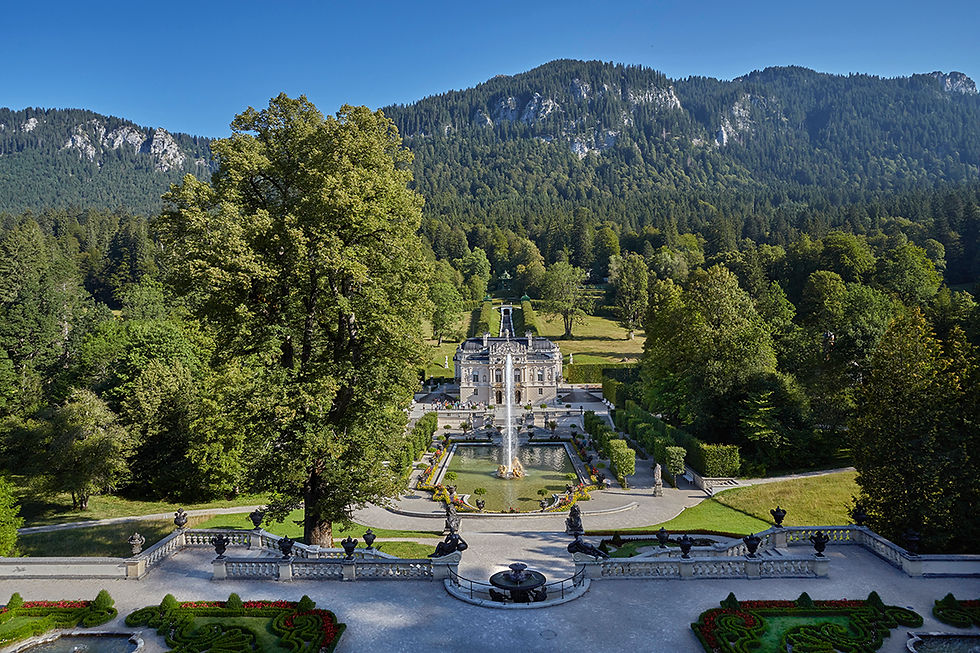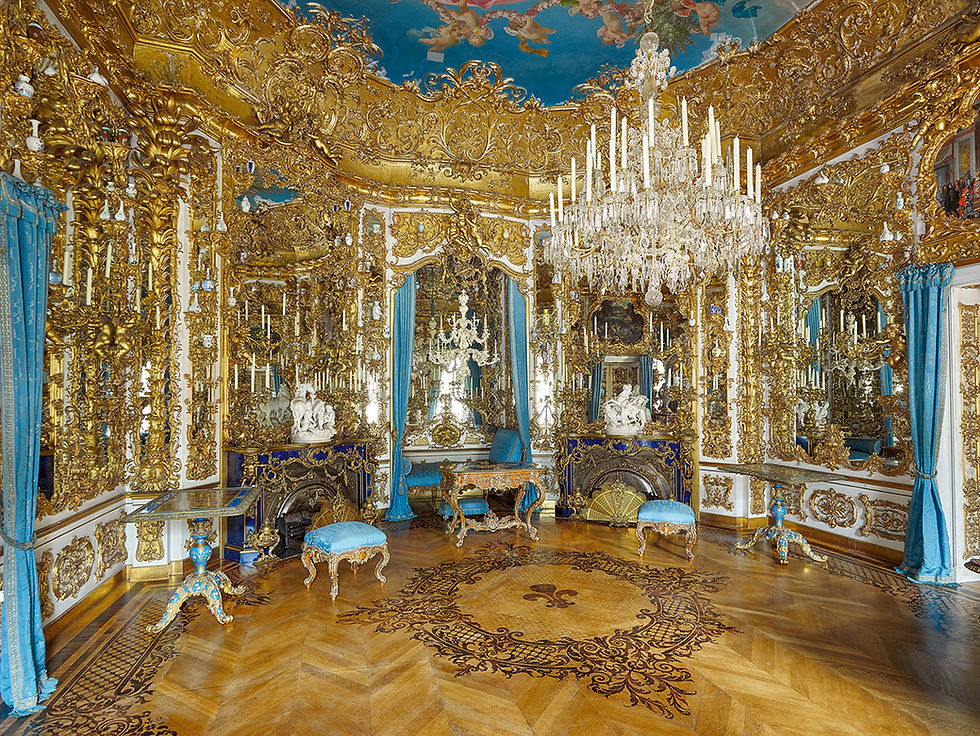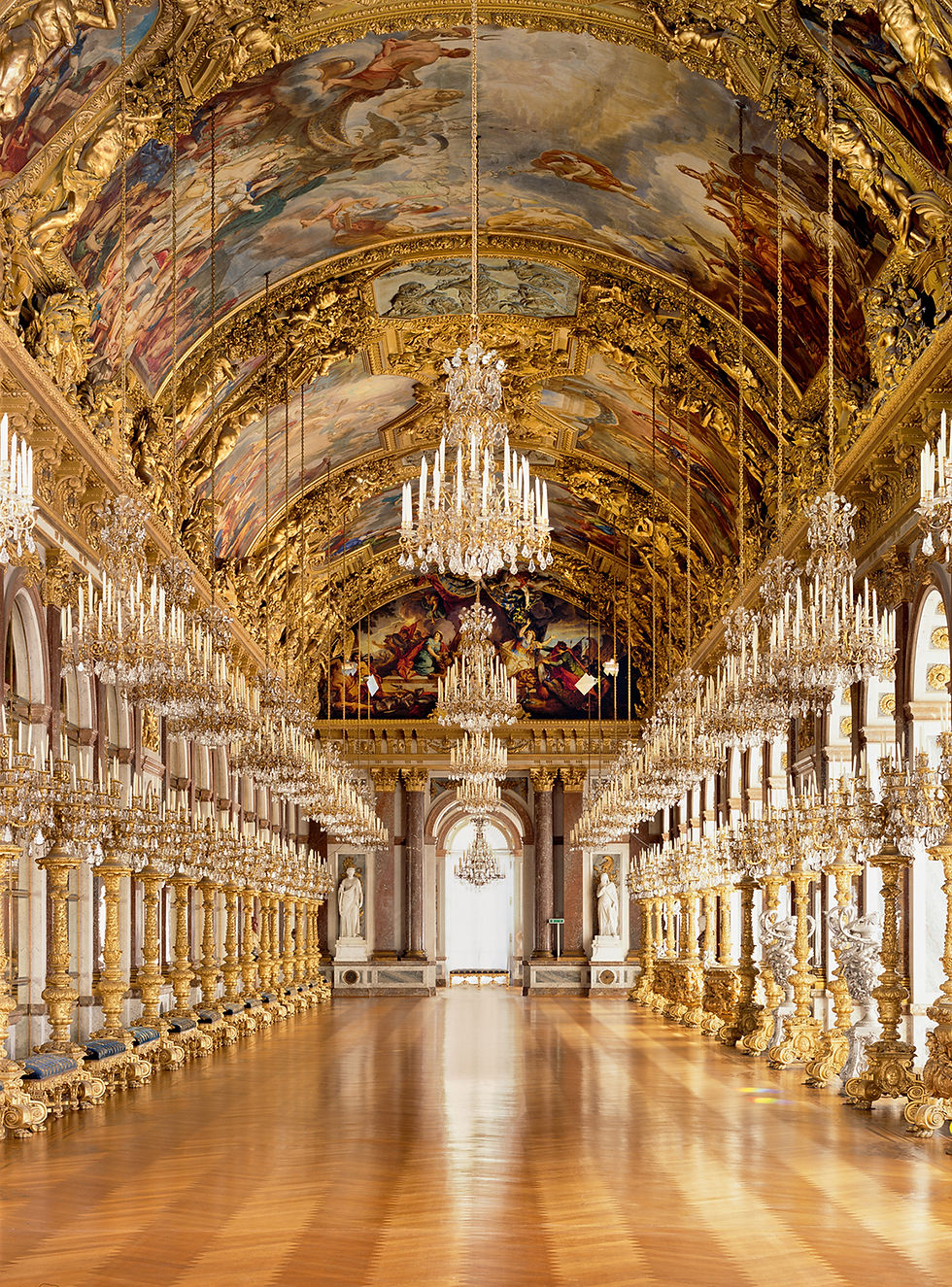Field Notes

Neuschwanstein Castle in Winter. © Bayerische Schlösserverwaltung. Photography: Fotostudio Samer.
The palaces of Bavaria’s King Ludwig II receive UNESCO World Heritage Listing
By Michael Webster
King Ludwig II’s (1845–1886) four grand palace complexes in Bavaria’s alpine region were designed as personal retreats and imaginative escapes, reflecting the romantic and eclectic spirit of the era. Drawing inspiration from the Wartburg Castle (a German castle that was built in the Middle Ages), the French Palace of Versailles, German fairy tales, and the operas of King Ludwig II’s favourite composer, Richard Wagner, the palaces showcase historicist styles and advanced 19th Century architectural and construction techniques.
Carefully integrated into stunning natural Bavarian landscapes, they embody King Ludwig II’s grand artistic vision. Opened to the public shortly after his death in 1886, the four palaces and their gardens were preserved as museums and major cultural landmarks and are now listed as World Heritage Sites by UNESCO for their collective ‘cultural and natural heritage considered to be of outstanding value to humanity’.
Neuschwanstein Castle
Neuschwanstein Castle is situated on a mountain ridge on the edge of the Ammergau Alps. In Neuschwanstein (1868–1886), King Ludwig II’s Wagnerian themes, in combination with the spectacular Alpine landscape, turned the celebrated composer’s epic, fantastical, and poetic world into a lived experience. Construction began in 1869, and the castle was intended to serve as a private residence for the monarch. Ludwig chose to pay for the palace out of his personal fortune and by means of extensive borrowing rather than Bavarian public funds. Since the monarch’s death, more than 61 million people have visited Neuschwanstein.

Neuschwanstein Castle. © Bayerische Schlösserverwaltung. Photography: kreativ-instinkt.

Singers’ Hall, Neuschwanstein Castle. © Bayerische Schlösserverwaltung. Photography: Rainer Herrmann.

Throne Hall, Neuschwanstein Castle. © Bayerische Schlösserverwaltung. Photography: Rainer Herrmann.

Bedroom, Neuschwanstein Castle. © Bayerische Schlösserverwaltung. Photography: Florian Schröter.
Linderhof Palace and Park
Linderhof Palace and Park are located in the Graswang Valley area of the Ammer Mountains. In Linderhof (1870–1878), the king assembled an 18th Century palace, with exotic features inspired by faraway lands (chiefly Morocco and Turkey). Linderhof is the smallest of the palaces built by the monarch, and the only one that was actually completed, and in which he spent a great deal of time from 1876 until his death.

Linderhof Palace. © Bayerische Schlösserverwaltung. Photography: Maria Scherf/Andrea Gruber.

Terrace Gardens, Linderhof Palace Park. © Bayerische Schlösserverwaltung. Photography: Maria Scherf/Andrea Gruber.

Venus Grotto, Linderhof Palace Park. © Bayerische Schlösserverwaltung. Photography: Maria Scherf/Veronika Freudling.

Hall of Mirrors, Linderhof Palace. © Bayerische Schlösserverwaltung. Photography: Maria Scherf/Andrea Gruber.
Herrenchiemsee New Palace and Gardens
In 1873, King Ludwig II acquired the Herreninsel (a 238-hectare island in Bavaria’s largest lake, Chiemsee, in the Chiemgau region) as the location for his Royal Palace of Herrenchiemsee (New Palace). Modelled on Versailles, this palace was built as a ‘Temple of Fame’ for King Louis XIV of France, whom King Ludwig II fervently admired. Here at Herrenchiemsee New Palace, King Ludwig II was protected from the outside world and could remain largely undisturbed.

Herrenchiemsee New Palace. © Bayerische Schlösserverwaltung. Photography: Ulrich Pfeuffer.

Imperial Hall, Augustinian Monastery, Herrenchiemsee. © Bayerische Schlösserverwaltung. Photography: Konrad Rainer.

State bedchamber, Herrenchiemsee New Palace. © Bayerische Schlösserverwaltung. Photography: Maria Scherf/Andrea Gruber.

Great Hall of Mirrors, Herrenchiemsee New Palace. © Bayerische Schlösserverwaltung. Photography: Rainer Herrmann/Ulrich Pfeuffer/Maria Scherf.
The King’s House on Schachen
The King’s House on Schachen is located in the Wetterstein Mountains at 1,866 metres above sea level. King Ludwig II started planning to build a house in the mountains in the Werdenfelser Land area in 1869. He chose the location as Schachen, at the foot of the Wetterstein massif, at an altitude of 1,866 metres (6,122 feet) – unsurprisingly, as it offers one of the most magnificent vistas of the high mountains to be seen anywhere in the Bavarian Alps. The King’s House on Schachen is only accessible on foot, with the walk up and back taking between 6 and 7 hours.

King's House on Schachen. © Bayerische Schlösserverwaltung. Photography: Maria Scherf/Veronika Freudling.

Turkish Hall, King's House on Schachen. © Bayerische Schlösserverwaltung. Photography: Maria Scherf/Veronika Freudling.
The 19th Century was characterised by a tension between withdrawal (escapism and romance) and progress (enthusiasm for architectural and functional advancements and a better world), and these were expressed in a search for and creation of earthly paradises and artificial parallel worlds. The castles of Neuschwanstein, Linderhof, the King’s House on Schachen, and Herrenchiemsee offer a unique insight into these cultural phenomena, which have otherwise been lost.
In the royal castles of King Ludwig II, German and European cultural history of the 19th Century is manifested in a unique form – united to form a Gesamtkunstwerk, a ‘total work of art’ of that time – and today they remain an immediate and tactile experience. Even the origins of our modern entertainment culture can be traced and experienced in the royal castles, and this is particularly evident from the appreciation around the world of Neuschwanstein Castle as a universally identifiable ‘fairy tale castle’ without peer.
Michael Webster is The Solo Traveller’s International Community Development Lead. The Solo Traveller is grateful to our friends at Bayerische Schlösserverwaltung (the Bavarian Administration of State-Owned Palaces, Gardens and Lakes) for permission to access their exclusive and extensive collection of photographs for this feature.





